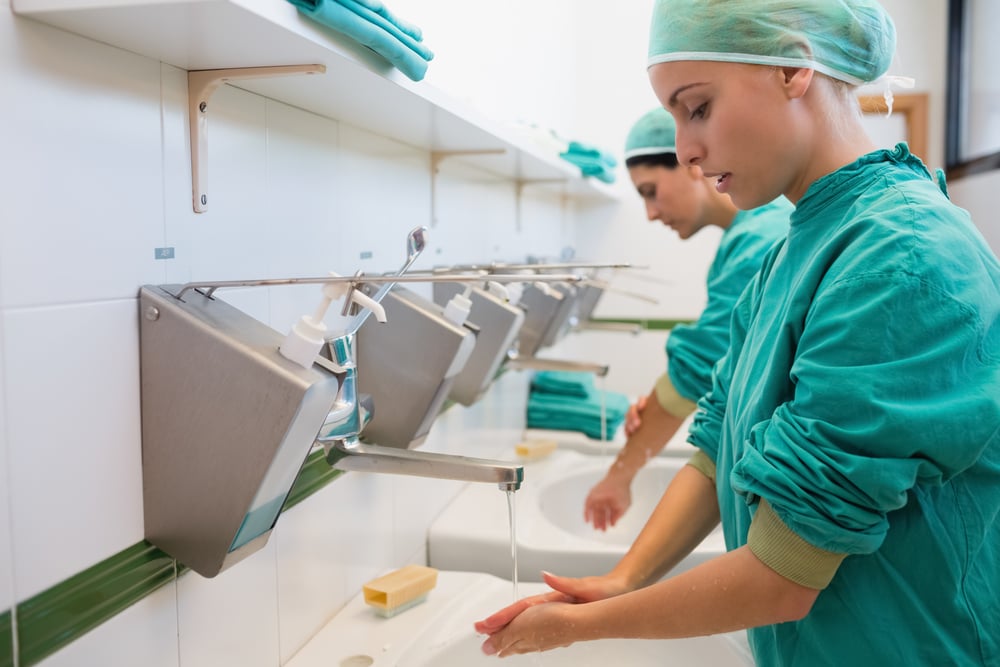
Four Ways to Prevent and Control Hospital-Acquired Infections
When a patient comes to your facilities for healthcare, they expect that you can effectively address the issue quickly and with ease and expertise. Now, imagine that this same individual ends up receiving an infection while under your care. The spread of infection in healthcare environments, as well as how it affects both your patients and your healthcare workers, is an important topic to evaluate, especially if these types of incidents happen frequently. Below, we'll dive deeper into insightful statistics regarding infection in healthcare facilities, how infections spread and how they can be addressed, and why reaching out to hospital infection control consultants can help you improve your approach to infection control and prevention.
Why is infection control so important? The statistics behind hospital-acquired infections.
Hospital-acquired infections (HAI) or healthcare-associated infections may occur more frequently than expected, perhaps because patient care might not be as satisfactory as many healthcare professionals believe. The United States Centers for Disease Control and Prevention (CDC) estimates that approximately 1.7 million patients contract HAIs annually while receiving treatment for issues unrelated to the infection that they've contracted. Even more troubling, approximately 98,000 of these individuals (about 1 in 17) die as a result of their infection.
For those who operate several facilities, these statistics can be eye-opening, and revealing just how much of a threat HAIs pose to patient safety naturally drives action. Before you can successfully address hospital infection control and defend your patients and healthcare personnel against infectious diseases, you first must understand where the greatest risks lie and what type of response your facilities should take to prevent and control infections.
What are the causes of HAIs, and how can they be addressed and avoided?
Clinicians and healthcare professionals must first understand what causes HAIs before they can take steps to reduce these risks and provide patients with long-term care that results in fewer infectious outbreaks. HAIs require three distinct things in order for infection to occur:
- Source: Hospitals are a natural source of infectious diseases since patients with a wide variety of ailments are receiving treatment in one place; thus, sanitation and disinfection are critical. In some cases, infections are spread when individuals come into direct contact with a source. A source can be defined as a human being (i.e., nurses and doctors, other patients, family and friends) or a surface where germs thrive. Examples include counters, sinks, showers, or healthcare devices like a catheter or an IV.
- Transmission of Infection: While areas or individuals infected with viruses and germs pose a risk to everyone in your facilities, these sources rely on transmission in order to move from source to person. Transmission can occur when a patient comes into contact with a source (either directly or through a healthcare worker who has touched the germs and introduced them to the patient), when airborne viruses travel to the person via actions like coughing or sneezing (in the form of droplets or air particles), and when bloodborne pathogens are introduced into an individual's bloodstream via a sharp object.
- A Susceptible Person: Those who are most at risk will be most impacted by infections in a hospital environment. This might include individuals who have not received vaccines for certain infectious diseases, those who have weak immune systems (due to cancer, diabetes, etc.), people taking medication like antibiotics that can leave their bodies susceptible to infection, and those who have recently undergone medical procedures in which open wounds or medical devices make it possible for germs to enter the body (i.e., ventilator, tubes, major surgery).
These patterns of infection are predictable, which means that it's possible for hospitals and other healthcare facilities to defend against infections. Some of the best ways to prevent and control infection include the following:
- Ensure that your healthcare workers are following proper protocols for hygiene and washing their hands each time they come into contact with sources and patients.
- Provide your personnel with the necessary personal protective equipment (PPE) to protect themselves and their patients. PPE includes waterproof gowns, face shields, masks, goggles, gloves, and similar items that provide protection and can easily be changed in case of contamination.
- Develop extensive cleaning protocols that discuss in-depth the various sources that can spread infection and how these sources need to be sanitized and maintained to best protect everyone in your facilities.
- Learn about medication safety to understand the various risks and side effects posed by certain medications and how these products can impact the health of already vulnerable populations.
Effective hospital infection control begins with education and ends with actionable plans that you can incorporate into your facilities' cultures to provide a better quality of care.
Need support? Enlist the help of ECRI infection prevention and control services and consultants.
Infection prevention and control both require deep knowledge of navigating crises, identifying risks, and creating plans for the future. Our expert consultants and resources here at ECRI can provide you with the support you need to investigate current incidents while simultaneously putting safeguards in place and helping you prepare for potential issues. Our extensive knowledge base and online courses and resources make it easy for your personnel to learn more about infection control and risk management in order to fully support your facilities and everyone inside.
Learn more about how ECRI’s knowledge can help you reduce infection risks: www.ecri.org/solutions/infection-prevention.
